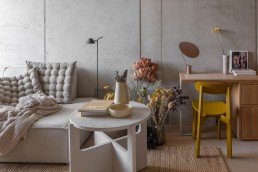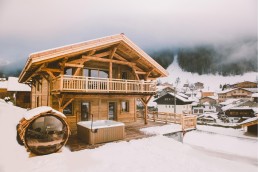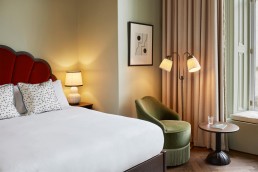The Hoxton has made its debut in Germany, with the opening of The Hoxton, Charlottenburg in West Berlin.
The 234-room hotel’s interior design is courtesy of Ennismore’s inhouse design studio, AIME Studios, and is centred around rough nouveau, a concept which draws inspiration from the theatricality of Charlottenburg’s golden era and the raw materiality of Brutalism. The spaces are layered and textural – unrefined plaster walls provide the backdrop to ornate Art Deco light fittings and vintage furnishings, and industrial materials are used in juxtaposition with exaggerated cornicing and emerald-green tiles. A curated collection of locally sourced and commissioned artwork includes a bespoke abstract mural by Berlin-based artist Stefanie Kägi, which dominates one wall of the lobby and nods to the jerky, dancelike figuration of German Expressionism.
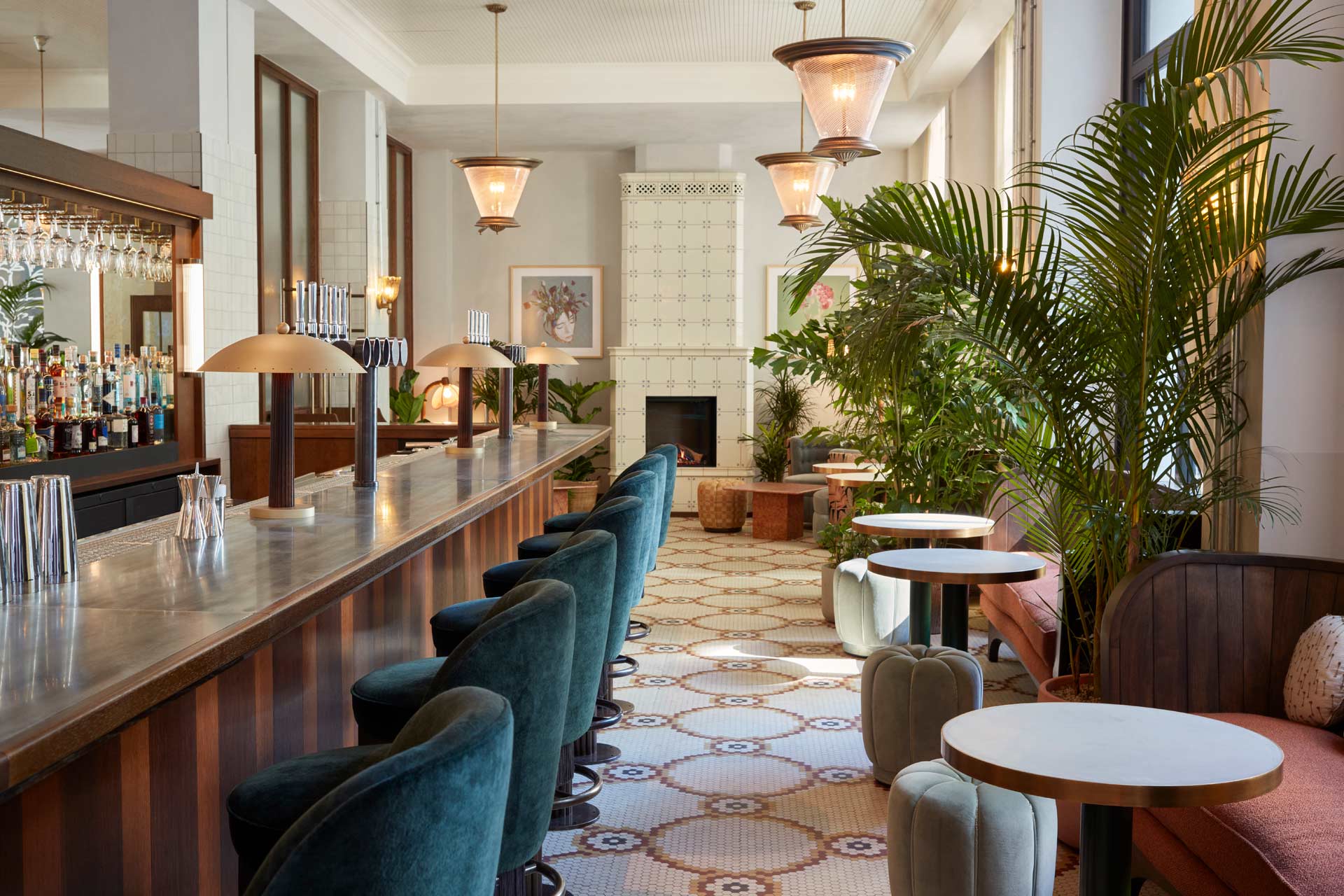
Blue and green tones inform the colour palette of the lobby, which is dotted with mid-century furniture sourced from Northern Europe, bespoke rugs and referential Bauhaus artwork. Art Nouveau-inspired sofas, armchairs and tables find home under striking Murano glass chandeliers, while a central wraparound bar leads to an intimate Winter Garden, complete with a Delft-inspired tiled fireplace.
Within guestrooms, design continues to be inspired by Art Nouveau forms – a muted colour palette of desaturated pinks and greens is the backdrop for vintage-inspired furniture and scalloped headboards, with the shell motif recurring in striking rug patterns and glass wall lights. Wall panelling and wooden herringbone flooring provide a structural counterpoint to the soft fluidity of the rooms, and this juxtaposition extends to the bathroom design where exposed metal shelving is set against graduated mauve tiling. All rooms feature the likes of Roberts radios, Naturalmat mattresses and The Hoxton’s signature neighbourhood guides.
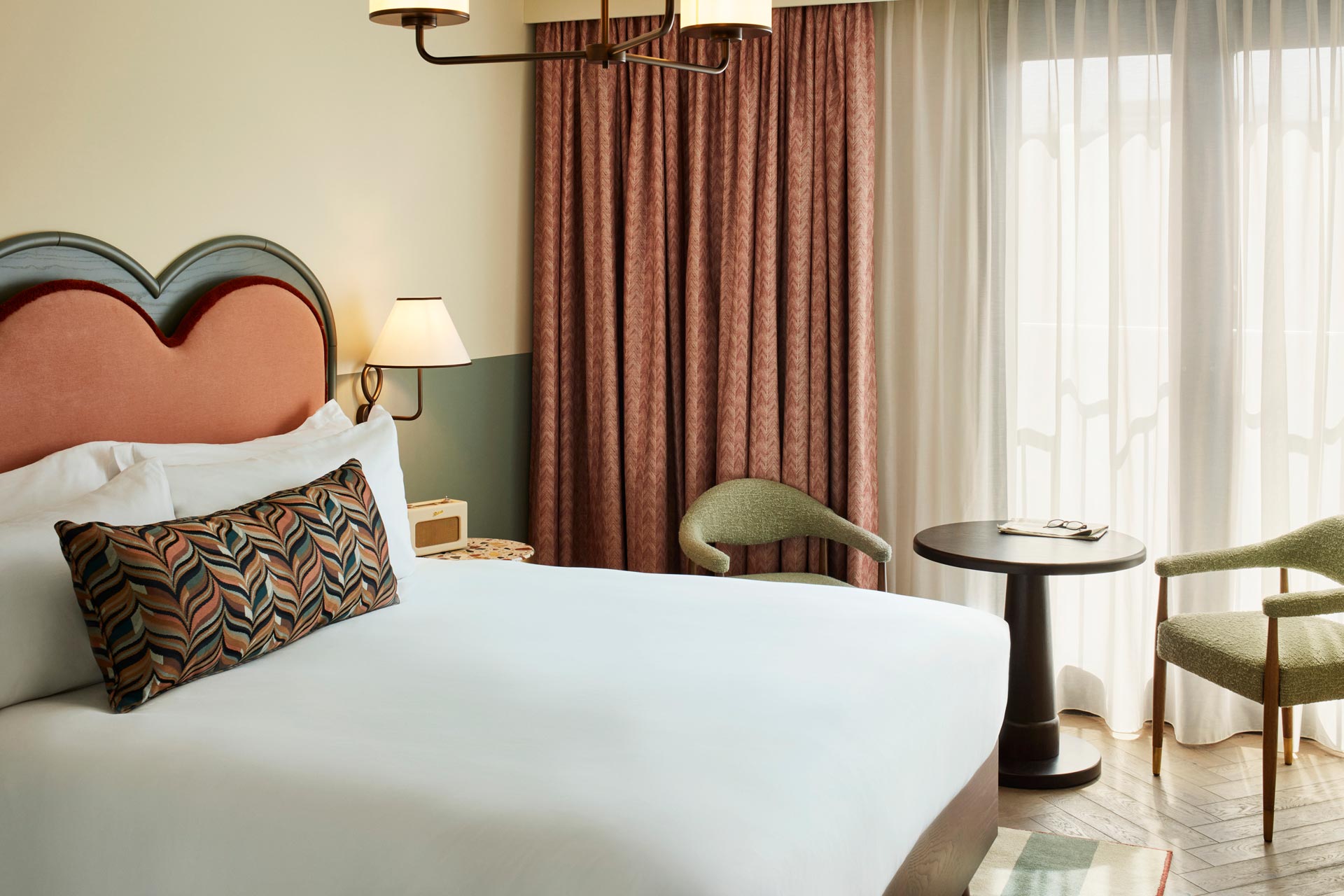
As for food and beverage, guests can choose between The Teahouse – a cafe which turns into a cocktail bar in the evening – and House of Tandoor, a north Indian-inspired restaurant which serves breakfast, lunch and dinner. Interiors at both sites evoke the opulence of palaces and hotels in Kolkata and Bombay in the 1920s. At The Teahouse, shell-patterned mosaic tiles accentuate a curved bar with a green marble countertop, while oversized windows flood the space with light. At House of Tandoor, the open-plan copper and wood kitchen takes centre stage, and bench seating, Indian-inspired artwork and wooden accents contrast with rough lime wash plaster walls. A central sculpture of vintage-style gramophones meanwhile references the Indian jazz era.
Also making an appearance in the new opening is The Apartment, the hybrid meeting and events space which features in every Hoxton hotel – home to three flexible private rooms, the Study, Dining Room and Living Room, centred around the communal Pantry Kitchen. The Apartment has been designed to be reminiscent of a 1920s parlour, with Mary Wigman-inspired interiors defined by fluid lines, soft, muted tones, vintage lighting and a touch of chintz.
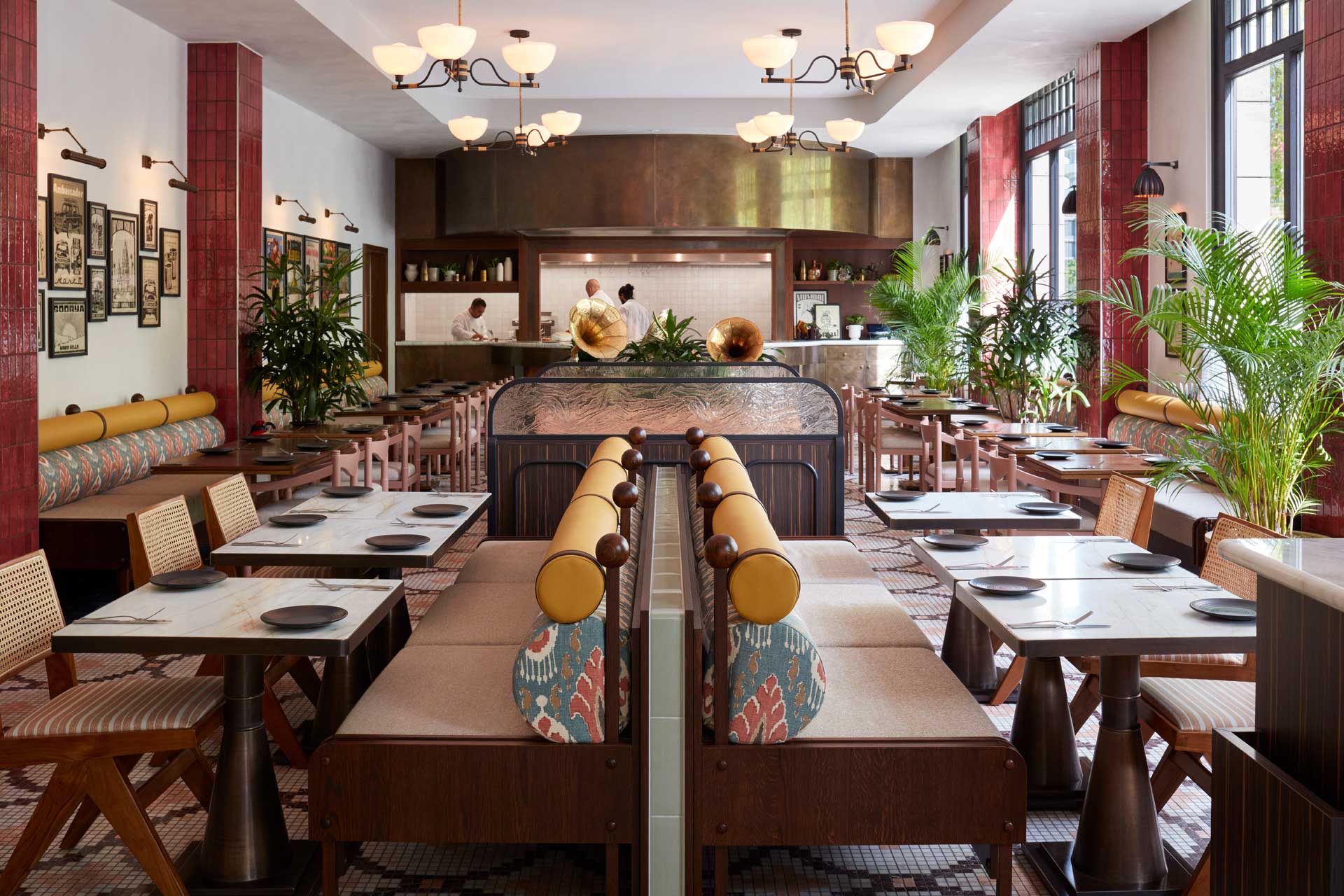
Related Posts
27 March 2023
Locke sets sights on Berlin
16 November 2022
The Hoxton to debut Hox Chalet in the French Alps
17 October 2022
